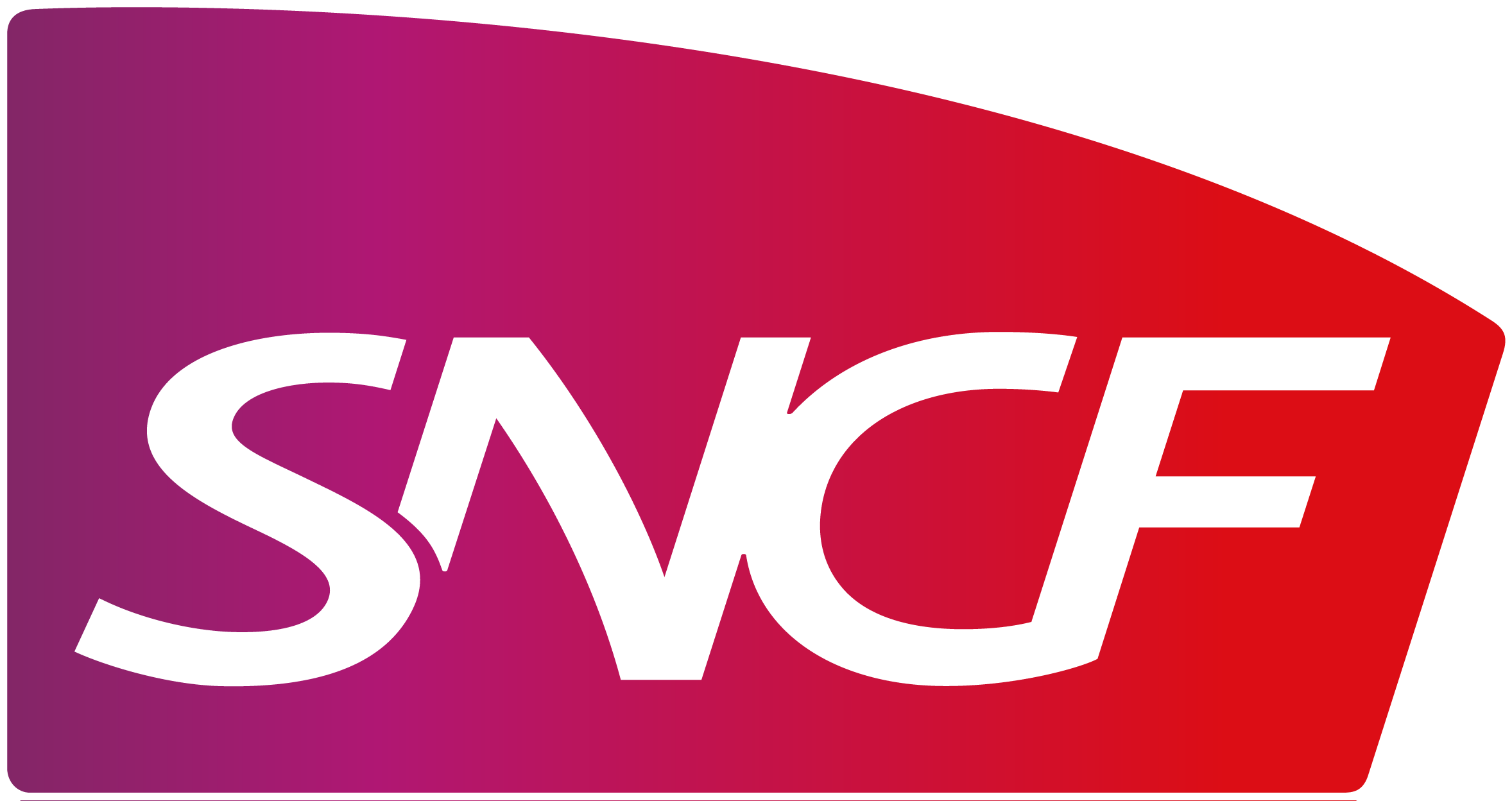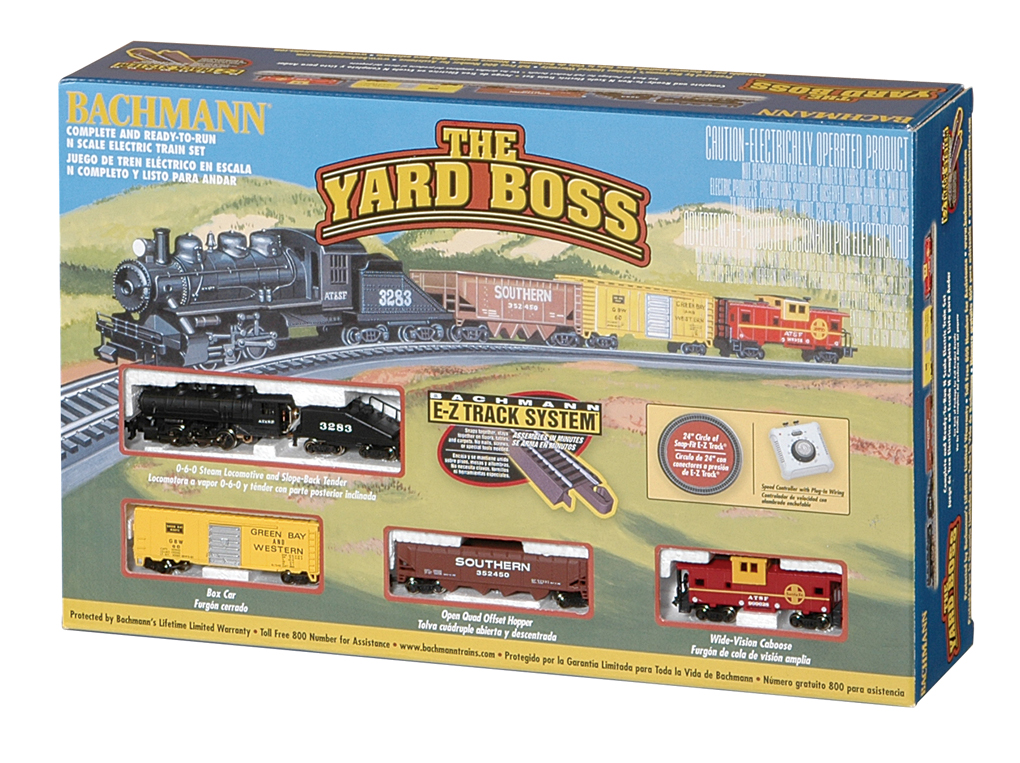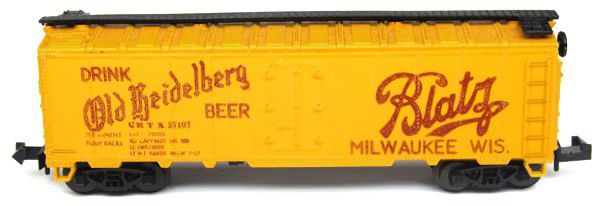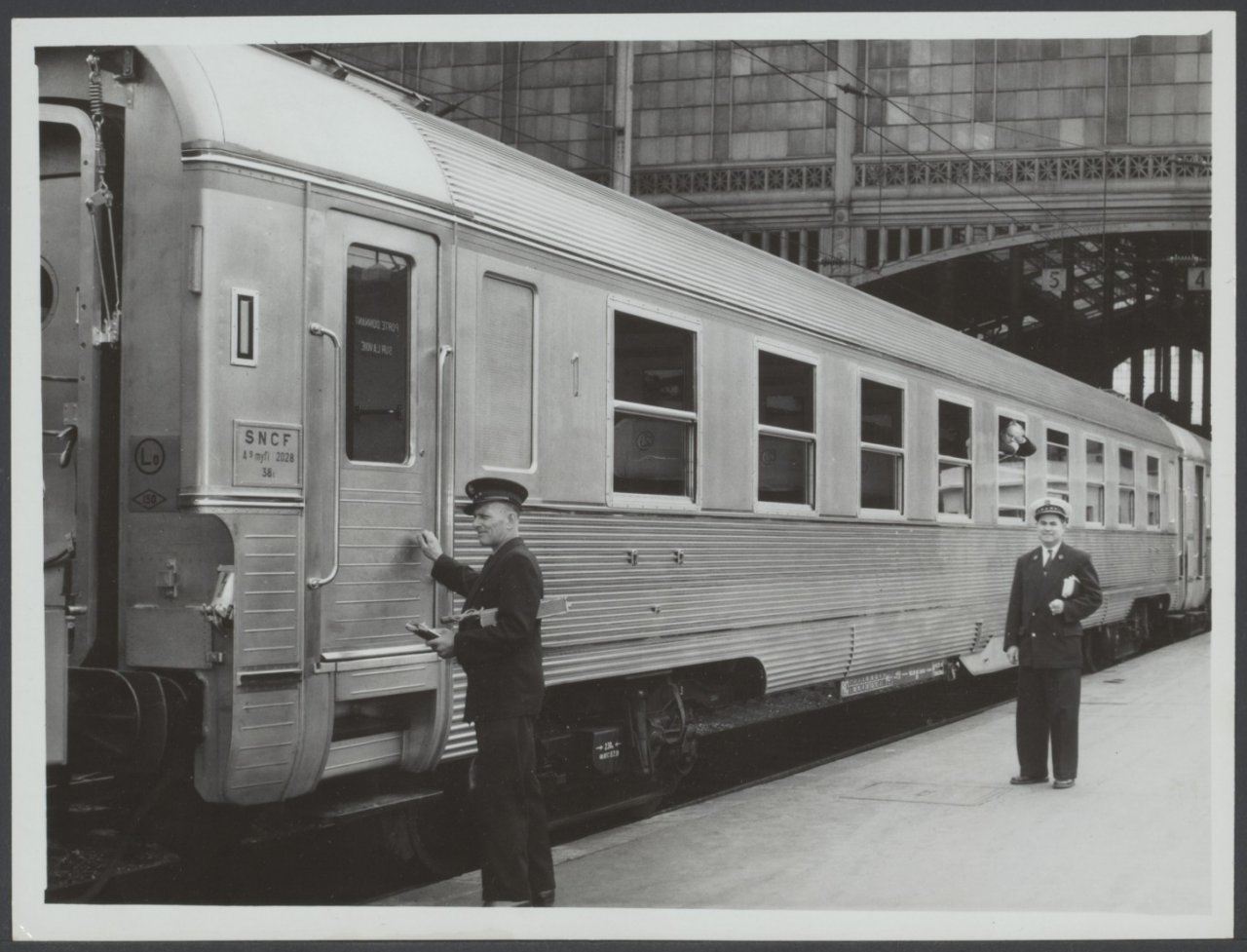Model Information: Introduced in 1968, this body style was available up until the early 1980's.
With a length of 138mm, this car is shorter than the prototype DEV Inox Long; it should be 150 mm at N scale (1/160) to be prototypically correct.
For a short period of time after 1968, this body style has also been used repainted with Canadian paint schemes.
With a length of 138mm, this car is shorter than the prototype DEV Inox Long; it should be 150 mm at N scale (1/160) to be prototypically correct.
For a short period of time after 1968, this body style has also been used repainted with Canadian paint schemes.
Prototype History: The DEV cars have been developed by the SNCF Division des Études des Voitures (DEV) - Car Design Division - aiming at providing the French National Railway with a unified fleet of express cars at the end of the Second World War, to replace the series produced by the old companies prior to creation of the SNCF in 1938.
These cars were available in 2 distinct versions:
- DEV AO: Acier Ordinaire - ordinary steel - or Forestier car (name of DEV director in 1946), from 1946 to 1959 - a total of 1595 have been built.
- DEV Inox: Inoxydable - stainless steel car, from 1950 to 1970. These lighter cars have been built under license of the Budd patent for Corrugated Stainless steel cars. A total of 406 have been built (142 « Short » et 264 « Long »)
They came in two body lengths.
- DEV Courte (Short) : body length 22.286 m
- DEV Longue (Long) : body length 24.036 m
They were qualified to run at 140 km/h (87 mph) and then 160 km/h (100 mph).
All DEV cars have been decommissioned after 1998.
The DEV Inox cars have also been ordered by the Portuguese Railways (CP) in 1952.
Full roster (in French): DEV Inox Court, DEV Inox Longue, DEV AO Court, DEV AO Longue, DEV Mistral 56.
These cars were available in 2 distinct versions:
- DEV AO: Acier Ordinaire - ordinary steel - or Forestier car (name of DEV director in 1946), from 1946 to 1959 - a total of 1595 have been built.
- DEV Inox: Inoxydable - stainless steel car, from 1950 to 1970. These lighter cars have been built under license of the Budd patent for Corrugated Stainless steel cars. A total of 406 have been built (142 « Short » et 264 « Long »)
They came in two body lengths.
- DEV Courte (Short) : body length 22.286 m
- DEV Longue (Long) : body length 24.036 m
They were qualified to run at 140 km/h (87 mph) and then 160 km/h (100 mph).
All DEV cars have been decommissioned after 1998.
The DEV Inox cars have also been ordered by the Portuguese Railways (CP) in 1952.
Full roster (in French): DEV Inox Court, DEV Inox Longue, DEV AO Court, DEV AO Longue, DEV Mistral 56.
Road Name History: SNCF (Société Nationale des Chemins de fer Français; "National society of French railways" or "French National Railway Company") is France's national state-owned railway company and manages the rail traffic in France and the Principality of Monaco. SNCF operates the country's national rail services, including the TGV, France's high-speed rail network. Its functions include operation of railway services for passengers and freight, and maintenance and signalling of rail infrastructure.
SNCF employs more than 180,000 people in 120 countries around the globe. The railway network consists of about 32,000 km (20,000 mi) of route, of which 1,800 km (1,100 mi) are high-speed lines and 14,500 km (9,000 mi) electrified. About 14,000 trains are operated daily. The company has its headquarters in Saint Denis (93200), near Paris, 2 place aux Etoiles.
In 2010 SNCF was ranked 22nd in France and 214th globally on the Fortune Global 500 list.
It is the main business of the SNCF group, which in 2014 employed 245,763 people and had 27.2 billion € of sales in 120 countries.
From Wikipedia
SNCF employs more than 180,000 people in 120 countries around the globe. The railway network consists of about 32,000 km (20,000 mi) of route, of which 1,800 km (1,100 mi) are high-speed lines and 14,500 km (9,000 mi) electrified. About 14,000 trains are operated daily. The company has its headquarters in Saint Denis (93200), near Paris, 2 place aux Etoiles.
In 2010 SNCF was ranked 22nd in France and 214th globally on the Fortune Global 500 list.
It is the main business of the SNCF group, which in 2014 employed 245,763 people and had 27.2 billion € of sales in 120 countries.
From Wikipedia
Brand/Importer Information: Lima N scale European models were numbered with 3 digits until 1978. They were renumbered after 1978 by adding "320" before the previous number. e.g. "306" became "320306".
Manufacturer Information:  Lima S.p.A (Lima Models) was a brand of railway models made in Vicenza, Italy, for almost 50 years, from the early 1950s until the company ceased trading in 2004. Lima was a popular, affordable brand of 00 gauge and N gauge model railway material in the UK, more detailed H0 and N gauge models in France, Germany, Italy, Switzerland, and the United States as well as South Africa, Scandinavia and Australia. Lima also produced a small range of 0 gauge models. Lima partnered with various distributors and manufacturers, selling under brands such as A.H.M., Model Power, Minitrain and PMI (Precision Models of Italy). Market pressures from superior Far Eastern produce in the mid-1990s led to Lima merging with Rivarossi, Arnold, and Jouef. Ultimately, these consolidations failed and operations ceased in 2004.
Lima S.p.A (Lima Models) was a brand of railway models made in Vicenza, Italy, for almost 50 years, from the early 1950s until the company ceased trading in 2004. Lima was a popular, affordable brand of 00 gauge and N gauge model railway material in the UK, more detailed H0 and N gauge models in France, Germany, Italy, Switzerland, and the United States as well as South Africa, Scandinavia and Australia. Lima also produced a small range of 0 gauge models. Lima partnered with various distributors and manufacturers, selling under brands such as A.H.M., Model Power, Minitrain and PMI (Precision Models of Italy). Market pressures from superior Far Eastern produce in the mid-1990s led to Lima merging with Rivarossi, Arnold, and Jouef. Ultimately, these consolidations failed and operations ceased in 2004.
Hornby Railways offered €8 million to acquire Lima's assets (including tooling, inventory, and the various brand names) in March of the same year, the Italian bankruptcy court of Brescia (town near Milan, last headquarters of Lima) approving the offer later that year. In December 2004, Hornby Railways formally announced the acquisition along with the Rivarossi (H0 North American and Italian prototypes), Arnold (N scale European prototypes), Jouef (H0 scale French prototypes), and Pocher (die-cast metal automobile kits) ranges. As of mid-2006, a range of these products has been made available under the Hornby International brand, refitted with NEM couplings and sprung buffers and sockets for DCC (Digital Command Control) decoders.
From Wikipedia

Hornby Railways offered €8 million to acquire Lima's assets (including tooling, inventory, and the various brand names) in March of the same year, the Italian bankruptcy court of Brescia (town near Milan, last headquarters of Lima) approving the offer later that year. In December 2004, Hornby Railways formally announced the acquisition along with the Rivarossi (H0 North American and Italian prototypes), Arnold (N scale European prototypes), Jouef (H0 scale French prototypes), and Pocher (die-cast metal automobile kits) ranges. As of mid-2006, a range of these products has been made available under the Hornby International brand, refitted with NEM couplings and sprung buffers and sockets for DCC (Digital Command Control) decoders.
From Wikipedia
Item created by: Alain LM on 2020-02-09 15:08:18. Last edited by Lethe on 2020-05-07 00:00:00
If you see errors or missing data in this entry, please feel free to log in and edit it. Anyone with a Gmail account can log in instantly.
If you see errors or missing data in this entry, please feel free to log in and edit it. Anyone with a Gmail account can log in instantly.











